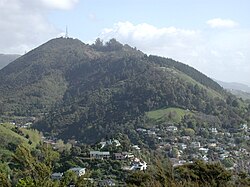Geography
The Grampians statistical area, which corresponds with the Bishopdale suburb, covers an area of 2.95 km². [4]
The suburb has several public reserves: Bishopdale Reserve, Bishopdale Retention Dam Bank, Cattle Market Reserve, Station Reserve and Waimea South Reserve. [5]
History
The estimated population of the area reached 1,910 in 1996. [2]
It reached 2,000 in 2001, 2,010 in 2006, 2,120 in 2013, and 2,210 in 2018. [2]
Demography
The area has an estimated population of 2,710. It has a population density of 850.08 people per km² as of 2019. [6]
As of the 2018 census, the median age was 43.6, the median income was $26,300, 3.4% of people earned over $100,00, 20.6% had a Bachelor's Degree or higher, and 4.8% of the workforce was unemployed. [2]
Ethnically, the population was 78.2% New Zealand European, 15.8% Māori, 3.7% Pacific peoples, 11.8% Asian, 1.0% Middle Eastern, Latin American, or African, and 1.1% identified with other ethnicities; 24.1% were born overseas. [2]
Religiously, the population is 56.5% non-religious, 30.8% Christian, and 1.6% Buddhist. [2]
Transport
As of 2018, among those who commuted to work, 32.6% drove a car, 2.2% rode in a car, 3.6% use a bike, and 3.6% walk or run. [2]
No one used public transport. [2]
This page is based on this
Wikipedia article Text is available under the
CC BY-SA 4.0 license; additional terms may apply.
Images, videos and audio are available under their respective licenses.

